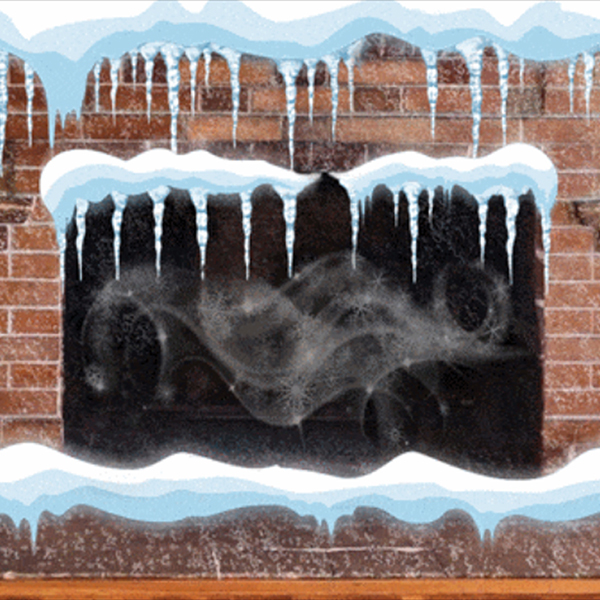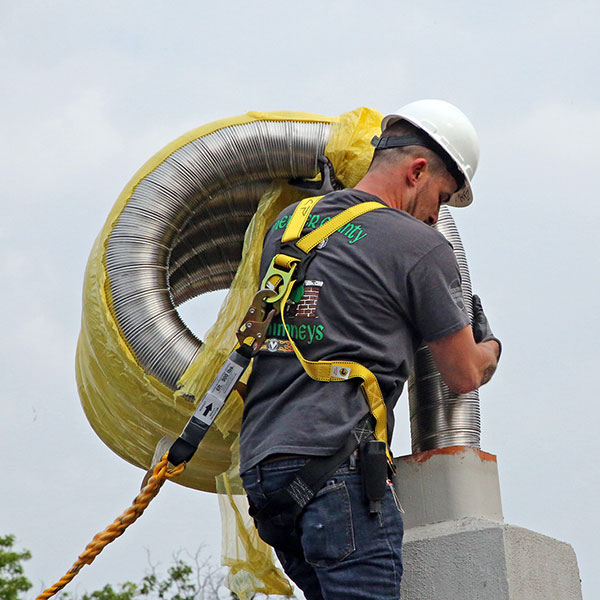Why is My Fireplace Cold & Drafty?
 It can be annoying to feel a draft or cold air coming from the fireplace, especially when you are expecting it to keep your room warm and cozy. Draft issues are a common problem with fireplaces, and there could be one or more reasons for its occurrence in your home.
It can be annoying to feel a draft or cold air coming from the fireplace, especially when you are expecting it to keep your room warm and cozy. Draft issues are a common problem with fireplaces, and there could be one or more reasons for its occurrence in your home.
Damper Doesn’t Shut Properly
One of the most common causes of a cold and drafty fireplace is forgetting to close the damper after the fire is extinguished or warping that is preventing it from closing correctly. Most chimneys have a throat damper that is installed above the firebox. The damper needs to stay open during a fire to vent the exhaust and supply the fire with oxygen to keep it going. But it’s easy to forget to close it when the fire burns out, allowing the cold outside air to fill the fireplace. And even when closed, cold air can cool the interior walls of the chimney, making your fires less efficient. Also, its proximity to the fire can cause damper corrosion and warping. When the damper is damaged, it no longer forms an airtight seal allowing cold air into the fireplace.
An effective way to minimize fireplace draft issues is to have your chimney professional install a top-sealing damper. Its location at the top of the chimney prevents cold air from going down the stack, and it will retain more heat in the firebox. It also minimizes downdrafts, restricts moisture, and keeps pesky critters out of the flue.
Damaged or Non-Existent Chimney Cap
The chimney cap is often the first line of defense for preventing draft issues. It covers the flue helping to push moisture away from the chimney and minimizing downdrafts. But it can become damaged due to normal wear and tear or lousy weather rendering them ineffective. Also, it may have been blown off in a thunderstorm or on a very windy day. When the cap is either damaged or missing, the flue is exposed to the elements, including outside air. Replacing the chimney cap will solve the problem. And if your chimney doesn’t have a cap, installing one is an easy fix.
 Flue Liner Deterioration
Flue Liner Deterioration
The chimney flue liner is another component that helps reduce drafts. Most chimneys have a clay tile flue liner. And while they can withstand high temperatures, the constant exposure to the intense heat and corrosive gases of combustion, will cause it to deteriorate. When this occurs, tiles can chip or crack. The loss of insulation in these areas can not only allow cold air to penetrate, but it can also increase the risk of exposure to carbon monoxide poisoning. The flue liner should be inspected annually, repairing any damaged tiles as soon as possible.
Gaps in Mortar Joints
Masonry chimneys are porous. Years of rain and snow can have a devastating effect on the exterior of a chimney. It can cause the mortar to erode, leaving gaps in between the bricks, creating a channel for outside air to enter the fireplace. Also, freezing rain will get inside these gaps and will be soaked up by the bricks, which is also porous.
As the freezing rain turns to ice, the expanding crystals cause the bricks to crack. When the damage is extensive, it can cause bricks to chip and fall from the chimney. If the problem is caught in the early stages, your chimney professional will use a method called tuckpointing to repair the damage. But extensive damage can cause structural issues leading to a partial or complete rebuilding of the chimney.



